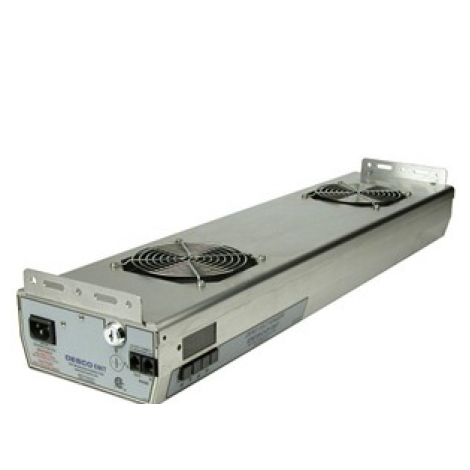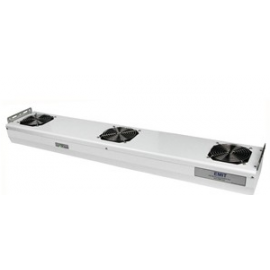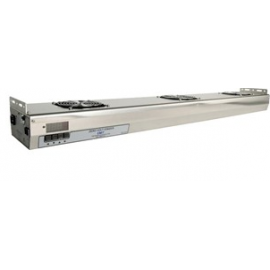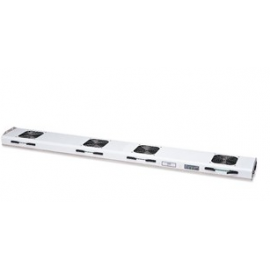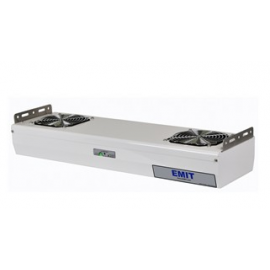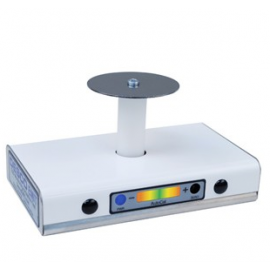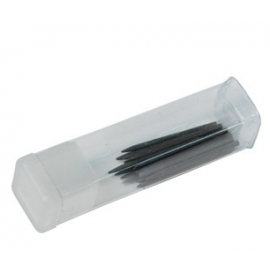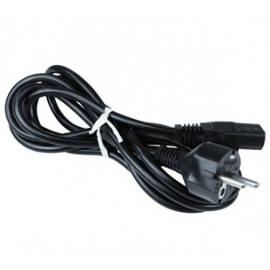DESCO #50664 - 2 - Fan Zero Volt Overhead Ionizer, 120 VAC
- RM0
- Availability:In Stock
- Brand: Desco
- Product Code: #50664
- 2-Fan Overhead Ionizer
Neutralizes electrostatic charges on insulators and ungrounded conductors in a 2’ x 4’ coverage area. - Fast Decay Times (< 3 seconds at 18”)
Discharges (removes) both positive and negative electrostatic charges within the coverage area. - ±3 Volt Offset Voltage Balance
Exceeds required limits of ANSI/ESD S20.20 and ESD TR53. - Dedicated High Voltage Power Modules with Balance Control at Each Fan
Allows each fan to be tuned to produce the optimum decay and balance in the coverage area. - Sealed Plenum Air Flow
Prevents contamination from being introduced to workstation. - Steady State DC Emitters
Spaced farther apart to prevent ion recombination, increase decay efficiency, and provide a broader coverage area of ionization. - Solid Tungsten Emitters
Maintains sharp point for optimal ionizer performance. Resists oxidation, melting and other damage that dulls the tip of the emitter - 9 Speed Fan (130 to 200CFM)
Consistent performance at all speeds. Low airflow may be used when working with small moving parts and components that may move with higher airflow. - Shielded Bearings
Retains lubricant and minimizes contamination in the work area. - Stainless Steel Housing
Minimizes foreign objects debris, corrosion, and other contaminations when used in clean or sensitive areas. - SIM Compatible
Connect to EMIT’s SIM (Smart Ionization & Monitoring) software to monitor and record the activity of the ionizer. - NIST Calibrated with Certificate
Calibrated with accepted procedures and standards traceable to the National Institute of Standards and Technology. For more information on calibration of Desco products, see Calibration. - Made in the United States of America
This item is made and stocked in Chino, CA
*U.S. Patent 6,205,408
“Necessary non-conductors in the environment cannot lose their electrostatic charge by attachment to ground. Ionization systems provide neutralization of charges on these necessary non-conductive items (circuit board materials and some device packages are examples of necessary non-conductors). Assessment of the ESD hazard created by electrostatic charges on the necessary nonconductors in the work place is required to ensure that appropriate actions are implemented, commensurate with risk to ESDS [ESD sensitive] items”. (ANSI/ESDS20.20-2007 Foreword)
“In order to mitigate field-induced CDM [Charged Device Model] damage, the ESD program shall include a plan for the handling of process-required insulators. If the field exceeds 2,000 volts/inch, steps shall be taken to either: A) Separate the insulator from the ESD-sensitive device by a distance of 30 cm (12 inches); or B) Use ionization or other charge mitigating techniques to neutralize the charge.” (ANSI/ESDS20.20-2007 section 8.3)
“The primary method of static charge control is direct connection to ground for conductors, static dissipative materials, and personnel. A complete static control program must also deal with isolated conductors that cannot be grounded, insulating materials (e.g., most common plastics), and moving personnel who cannot use wrist or heel straps or ESD control flooring and footwear. Air ionization is not a replacement for grounding methods. It is one component of a complete static control program. Ionizers are used when it is not possible to properly ground everything and as backup to other static control methods. In clean rooms, air ionization may be one of the few methods of static control available.” (ESD Handbook TR20.20 Ionization, section 5.3.6.1)
“All ionization devices will require periodic maintenance for proper operation. Maintenance intervals for ionizers vary widely depending on the type of ionization equipment and use environment. Critical clean room uses will generally require more frequent attention. It is important to set-up a routine schedule for ionizer service. Routine service is typically required to meet quality audit requirements.” (ESD Handbook TR 20.20 section 5.3.6.7 Maintenance / Cleaning)
“Activities that handle items that are susceptible to less than 100 volts HBM may require additional control elements or adjusted limits.” [ANSI/ESD S20.20 section 2.0]

